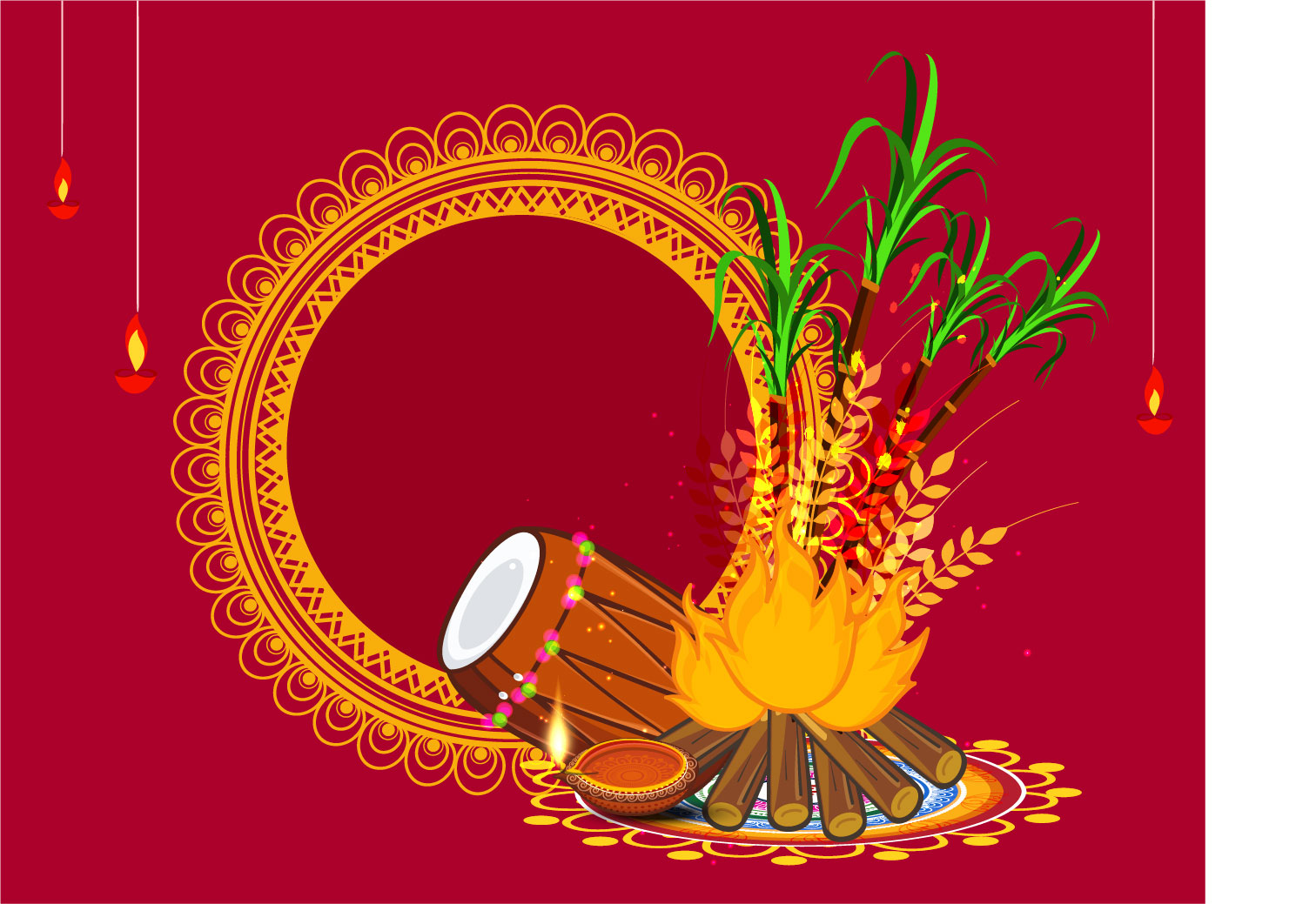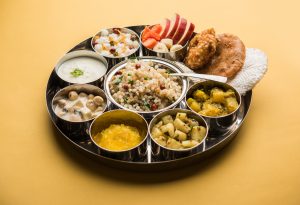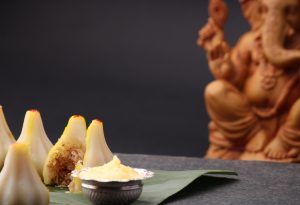Lohri is celebrated to mark the end winters and at the same time, rabi crops are ready for harvest. The farmers look forward to a new season for harvest. Apart from the mark of a new harvest season, it is also celebrated by lighting a bonfire, singing and dancing around it, especially in the North part of India. Well, we have curated the perfect menu to prepare for the Lohri night. Read on below to prepare these delicious delicacies by buying all the ingredients from Nature’s Basket.
- Pindi Chole
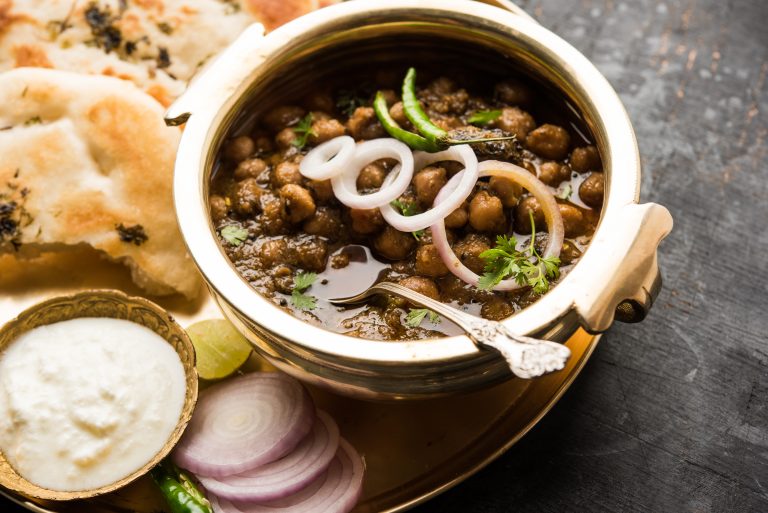
Ingredients:
- 250 grams dried white chickpeas
- 3 cloves
- 2 sticks cinnamon – each of 1 inch
- 2 black cardamoms
- 2 green cardamoms
- 2 tej patta (Indian bay leaf)
- 1 black tea bag
- 1 teaspoon black salt
- 3 tsp ginger-garlic paste
- ½ tsp red chilli powder
- 2 tsp coriander powder
- 1 tsp of garam masala powder
- 2 to 3 tsp chole masala
- 1 tsp of dry mango powder
- 2 tbsp of oil
- Salt as required
- 1 tsp of lemon juice
Instructions:
- Start by soaking the chole for 8 to 9 hours
- Boil the soaked chickpeas with the whole spices, black salt and tea bag/bags in a pressure cooker for 10-15 minutes. If the chickpeas are not cooked completely then pressure cook them for a few more minutes.
- You could also tie all the spices in muslin and make a bouquet garni and add it to the chickpeas.
- Drain the chickpeas. Remove the spices and tea bag.
- In a pan heat oil and saute the crushed ginger-garlic or ginger-garlic paste.
- When the raw aroma of the ginger-garlic disappears. Then add all the spice powders.
- Saute the spice powders for a minute on a low flame.
- Add the boiled chickpeas and mix it well with the masala.
- Add salt and check for seasoning. Adjust the seasoning if required by adding more salt or powdered spices.
- Let the chickpeas cook for 5 to 7 minutes in the masala on a low flame.
- Lastly, add lemon juice to the chickpeas and mix it well. Instead of adding lemon juice at this step, you can also serve lemon wedges with pindi chana.
- Serve pindi chole hot with onion rings, green chillies and lemon wedges accompanied with naan, bhatura, puri or even roti.
2. Makki Roti
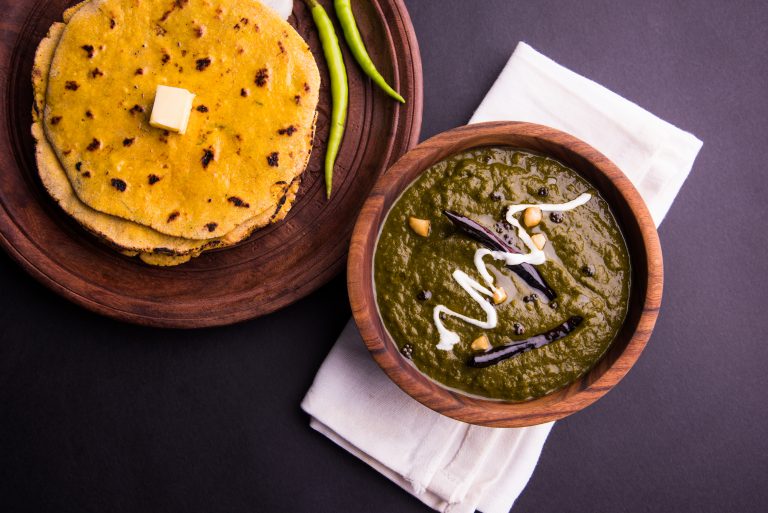
Ingredients:
- 2 cups of maize flour
- ½ cup of water, as required
- 1 tsp of ajwain
- Salt as required
- Ghee or oil for roasting
Instructions:
- In a mixing bowl take 2 cups maize flour or cornmeal, 1 teaspoon carom seeds and salt as required. Mix them together with a spoon.
- Heat 1 cup water separately in a pan till it comes to a boil. Add this hot water to the flour.
- Mix with a spoon. Cover and keep aside till the dough mixture becomes warm.
- When the mixture becomes warm and the heat is fine to handle, begin to knead to a smooth yet firm dough. If the dough looks dry, then add some warm water. If the dough looks sticky, then add a few tablespoons of maize flour.
- Knead into a smooth yet firm dough. You might see fine cracks but there’s nothing to worry about. Make medium-sized balls of the dough. Shape them into a neat ball and flatten them.
- Sprinkle some maize flour on the rolling board. Place the dough ball on the rolling board. Then sprinkle some maize flour on the dough ball also.
- Begin to gently roll with a rolling pin (belan). Add more flour if required.
- Roll to small to medium-sized round circles. Make into the size of a phulka or chapati but not very thin, it should be a little thick.
- You can even use a zip lock bag. If using a zip lock bag, then keep the bag on the rolling board or on a plate or on a surface which you can move. Place the dough ball in the bag. Press it slightly with your hands. Now with the rolling pin (belan), slowly roll. Sprinkle some flour. Move the rolling board and roll again. This is to ensure that all the sides of the roti are evenly rolled.
3. Sarso Saag

Ingredients:
- 2 bunches of palak, chopped
- 2 to 3 radish, chopped
- 1 large onion, chopped
- 2 to 3 medium-sized, tomatoes
- 1 green chilli, chopped
- 1-inch ginger, chopped
- 5 to 6 small-medium garlic, cloves
- 1 tsp of red chilli powder
- 2 to 3 tbsp of butter
- 1 tbsp of maize flour
- ½ cup of water
- Salt as required
Instructions:
- Add all the greens, onions, tomatoes, ginger, garlic, green chillies with salt and water in a deep pan or a pressure cooker. Add around 1 cup water to the veggies.
- Cook the whole lot in the pan for 7-10 minutes or in a pressure cooker for 3 to 4 minutes. Also, add maize flour and butter.
- Once cooled blend into a smooth or coarse paste. Add the saag in another pan and simmer for 7-10 minutes till it thickens a little bit.
- Brown the onions in ghee and then add the saag to it.
- Simmer for 3-4 minutes.
- For a saag serving of 2-3 people, 1 medium-sized onion is enough with 2 tbsp ghee for the tempering. The remaining saag you can refrigerate and use as when required.
If you are looking for more such recipes you can check out Traditional Baiasakhi Dishes To Feast On

